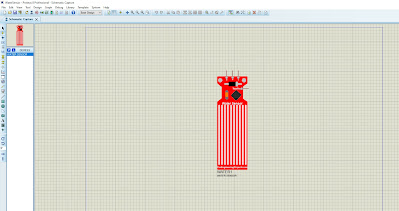Hi guys, today I want to share how to clean and service air cooler SHARP (PJA36TVB). Cleaning and servicing the air cooler regularly can restore the performance of the air quality. In addition, it gives health advantages because dust and pollen are accumulated in it. The best way to clean and service the air cooler is by teardown or disassemble all parts. The link tools I used are listed below:
Tools/Components/Items (Shopee):
- Air Cooler SHARP (PJA36TVB) - https://invol.co/cl55ezw
- Screwdriver Set - https://invol.co/cl3gqsf
- Plier Cutter - https://invol.co/cl55f7e
- Cable Tie - https://invol.co/cl55f83
- Air Cooler SHARP (PJA36TVB) - https://bit.ly/36SxngU
- Screwdriver Set - https://bit.ly/320woJi
- Plier Cutter - https://bit.ly/3hR9QDo
- Cable Tie - https://bit.ly/3kFWPOW
- Screwdriver Set - https://s.click.aliexpress.com/e/_991NUM
- Plier Cutter - https://s.click.aliexpress.com/e/_AN5NB2
- Cable Tie - https://s.click.aliexpress.com/e/_APRkIc
Specifications:
- Brand: SHARP
- Model: PJA36TVB
- Dimension (WxHxD): 306 x 745 x 375
- Power Consumption: 65W
- Rated Voltage (V): 220-240
- Rated Frequency (Hz): 50
- Air Volume: 320m³/h
- Fan Speed: 4 (Soft| Low| Middle| High)
- Motor Speed (High Speed): 1150 RPM
- Water Tank Capacity: 6L
- Nett Weight: 7.08 kg
Steps:
- First, remove the back filter cover, filter and water tank.
- Remove front and back covers.
- In order to deep clean the air cooler, we need to remove all component parts inside the air cooler.
- Plastic parts such as filter cover, front cover, back cover, fan and etc should be clean with soap and rinse with water.

24. Cleaning front cover with soap - For electrical and filter parts just brush off any dust and wipe with a dry cloth.

25. Wiping water pump using a dry cloth - Next, install all covers and component parts in reverse order removal. Note: Insert grease between fan cover and fan handle.

26. Greasing between fan cover and handle - If the process of cleaning the air cooler is complete, try turning on your air cooler. The air it releases feel cooler and has less noise.

Before and after clean and service
 |
| 1. Back filter cover |
 |
| 2. Filter |
 |
| 3. Left side back cover screws |
 |
| 4. Right side back cover screws |
 |
| 5. Left side back cover screws |
 |
| 6. Right side back cover screws |
 |
| 7. Bottom cover screws |
 |
| 8. Open back cover |
 |
| 9. Unscrew fan base |
 |
| 10. Unscrew fan base |
 |
| 11. Unscrew wire plug holder |
 |
| 12. Remove fan base |
 |
| 13. Remove electronic parts |
 |
| 14. Remove louvres motor |
 |
| 15. Separate covers |
 |
| 16. Remove electronic parts |
 |
| 17. Remove electronic parts |
 |
| 18. Remove fan motor |
 |
| 19. Unscrew fan shaft |
 |
| 20. Remove handle fan |
 |
| 21. Remove handle fan |
 |
| 22. Pull out fan |
 |
| 23. Unscrew water pump |
Video:












